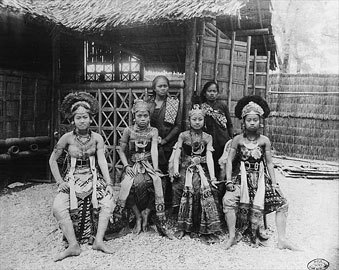Much like Gregor Samsa in Kafka’s The Metamorphosis, Joko of Roland Topor’s novel/play Joko’s Anniversary is the breadwinner of a family. Gregor Samsa is a travelling salesman, Joko works at the ‘Reservoir’ and his family consists of a mother, a father (who collects advertisements and is invalid) and two sisters.
“the old fellow got nimbly to his feet and leapt back on his shoulders”
One day, en route to work, Joko is jumped by a man who wants to piggyback Joko as if he were a taxi. This is his first encounter with seven otherworldly characters who are visiting his town for a convention. Joko and his colleagues at the Reservoir start to transport Wanda, Sir Barnett, Pozzi, Professor Krank, Pan Ton, Gunnar Ader and Doctor Fersen around the city and they are handsomely rewarded for their carrying services with gold coins.
One afternoon, while Joko is being straddled by Sir Barnett, he faints and falls. When he wakes up he finds that he has ‘fused‘ with Sir Barnett at his back, as if they were glued together. Their skins have been grafted together where they touch when piggybacking. Joko takes Sir Barnett home to his room. One by one, Wanda, Pozzi, Professor Krank, Pan Ton, Gunnar Ader and Doctor Fersen come to his room and they all fuse to the body of Joko. Meanwhile, Joko, is being maltreated by his ‘parasites‘ and they proceed by killing his two sisters, his mother and father. Before they die however, his mother and father succeed in killing all of the seven parasites with an axe.
When Joko wakes up he finds that the seven have disappeared and that his wounds have healed. However, it appears that the creatures have found a place inside his body. He is the host to the seven bodies who each in turn commit terrible atrocities when being in control of his body. Joko decides to kill himself, without success however and while he and his body survive, the parasites inside him die and start to spread a stench after a week or so. Exactly one year after the parasites’ death, a bus of tourists stops in front of Joko’s door, saying in unison: “Congratulations Joko!”
See also: http://jahsonic.tumblr.com/post/49805144480/joko-viert-zijn-verjaardag-1969-by-roland-topor











